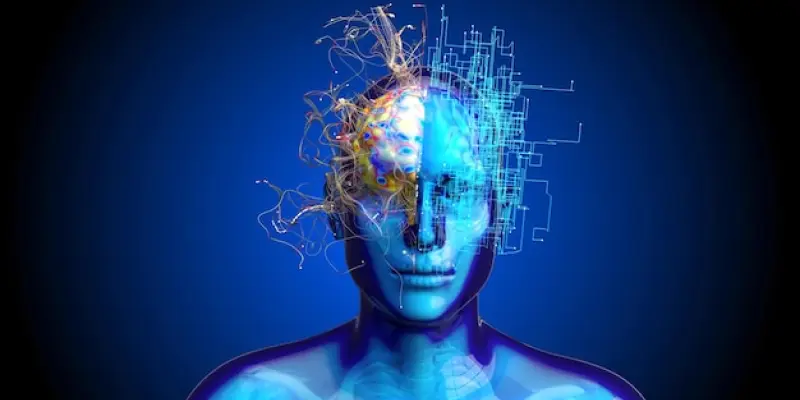Innovation, a driving force behind human progress, often thrives at the intersection of creativity and technology. Praveen Kumar Valaboju’s examination of human-AI collaboration emphasizes how artificial intelligence (AI) enhances human ingenuity, augmenting our capabilities while maintaining the intrinsic qualities of intuition and creativity. His research sheds light on transformative advancements that are reshaping industries and redefining human potential in partnership with AI systems.
Redefining Synergy: Humans and AI Working Together
The collaboration between humans and AI has evolved into a dynamic partnership that leverages the unique strengths of both parties. AI’s ability to process and analyze extensive datasets complements human creativity and problem-solving skills, achieving outcomes neither could accomplish alone. This synergy is particularly significant in healthcare, where AI improves diagnostic accuracy and speed. Consequently, medical professionals can focus on intricate, nuanced decisions, leading to enhanced patient care.
Moreover, AI’s role in healthcare extends to personalized treatment plans, leveraging patient data to tailor interventions more effectively. This collaboration is not just restricted to healthcare; it spans various sectors, including manufacturing and logistics, where AI streamlines processes, reduces errors, and elevates overall efficiency. By integrating AI into everyday workflows, businesses experience improved performance metrics, and human workers can devote more time to strategic tasks that require a human touch.
Enhancing Decision-Making Through AI Integration
A pivotal innovation in human-AI collaboration is AI’s transformative role in decision-making processes. By analyzing large datasets in real time, AI systems generate actionable insights that enable humans to make well-informed decisions with greater confidence. This integration is reshaping industries such as finance, where precise risk analysis is crucial, and urban planning, where effective resource allocation and optimization are key challenges.
In the finance sector, AI assists in identifying market trends, detecting fraudulent activities, and managing portfolios with unprecedented accuracy. Similarly, urban planners leverage AI to simulate traffic flows and optimize public transportation routes, enhancing city dwellers’ quality of life. This amalgamation of human judgment and AI precision ushers in a new era of data-driven decision-making, allowing for strategic choices that drive better outcomes across numerous fields.
Bridging Communication Gaps with AI-Driven Solutions
AI’s advanced capabilities in language processing and interpretation are revolutionizing global communication, leading to unprecedented connectivity. AI-powered translation tools are breaking down language barriers, facilitating seamless interaction across diverse linguistic communities and fostering international collaboration. These technologies not only enhance communication but also promote inclusivity by empowering individuals who were previously marginalized due to language constraints.
Language processing tools also extend to virtual customer service agents, enabling businesses to provide consistent and efficient support around the clock to a global audience. By bridging understanding gaps, AI-driven solutions foster a more connected world and create opportunities for equitable participation in global conversations and digital platforms. This increased connectivity is fostering a more inclusive and collaborative global environment, driving cross-cultural exchange and proliferation of ideas.
AI in Creative Endeavors: Augmenting Human Imagination
Contrary to concerns about AI suppressing creativity, it is actually fostering a significant surge of innovation in the arts and entertainment industries. AI-powered tools enable creators to explore new styles, generate fresh ideas, and produce diverse content, enhancing their creative processes rather than replacing them. This collaboration is evident in fields such as music composition, visual art generation, and game design.
AI-generated art and music offer novel forms of expression, pushing the boundaries of what artists can conceive and produce. Similarly, in game design, AI creates intricate game worlds and unique experiences that captivate players. AI serves as a collaborative partner, augmenting human creativity and imagination while expanding the potential for artistic and cultural innovation. This new era of creativity is marked by a symbiotic relationship between human vision and AI’s capabilities.
Ethical Implications and Challenges
Innovation, a cornerstone of human progress, often blossoms where creativity and technology intersect. In his study, Praveen Kumar Valaboju delves into the dynamic relationship between humans and artificial intelligence (AI), highlighting how AI can amplify human inventiveness. Valaboju illustrates how AI enhances our natural abilities, blending the machine’s computational power with the human touch of intuition and creativity. This synergy is driving transformative changes across various industries and is redefining our capabilities. By leveraging AI, we can push the boundaries of what’s possible, creating new opportunities and redefining human potential. His work sheds light on how AI not only complements but also enhances our inherent skills, ensuring that while machines handle complex computations, human ingenuity and creativity remain at the forefront. Through such a partnership, the future is one where AI systems and human intellect work in harmony, fostering advancements that propel industries forward and unlock new realms of possibility.

